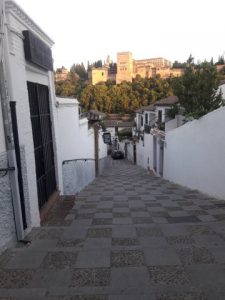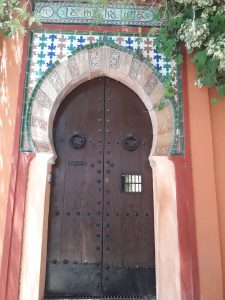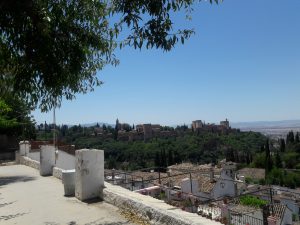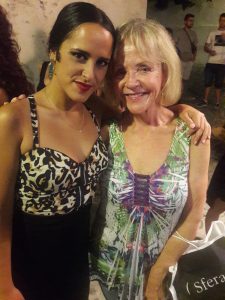Photo-journal by Dr. Vickie Hall Stevens
Dr. Vickie Hall Stevens’ global-mindedness resulted in her dissertation, Student Perceptions on Issues Related to Globalization, as well as extensive travel in the countries of 6 continents! She is also interested in dance and traveled to Spain to study Flamenco: “Although many of the details of the development of Flamenco are lost in history, it is certain that it originated in Andalusia and that from the VIII to the XV centuries, when Spain was under Arab domination” (All about Spain).
See Professor Stevens’ photo-journal of her travels in southern Spain.
Image: Granada, Spain by Dr. Vickie Hall Stevens

Image: Moorish Door by Dr. Vickie Hall Stevens

Image: The Plaza de San Nicolas by Dr. Vickie Hall Stevens

Professor Stevens captures a view of the Alhambra from San Nicolas: “Rising above the modern lower town, the Alhambra and the Albaycín, situated on two adjacent hills, form the medieval part of Granada. To the east of the Alhambra fortress and residence are the magnificent gardens of the Generalife, the former rural residence of the emirs who ruled this part of Spain in the 13th and 14th centuries. The residential district of the Albaycín is a rich repository of Moorish vernacular architecture, into which the traditional Andalusian architecture blends harmoniously” (UNESCO).
Image: Alhambra by Dr. Vickie Hall Stevens

Image: Professor Stevens and Professional Flamenco Dancer, Maria courtesy of Dr. Vickie Hall Stevens

Flamenco is part of the national heritage of Spain:
“Flamenco is an artistic expression fusing song (cante), dance (baile) and musicianship (toque). Andalusia is the heartland of Flamenco, although it also has roots in regions such as Murcia and Extremadura. “Cante” is the vocal expression of flamenco, sung by men and women, preferably seated, with no backing singers. The gamut of feelings and states of mind – grief, joy, tragedy, rejoicing and fear – can be expressed through sincere, expressive lyrics characterized by brevity and simplicity. Flamenco ”baile” is a dance of passion, courtship, expressing a wide range of situations ranging from sadness to joy. The technique is complex, differing depending on whether the performer is male (heavier use of the feet) or female (gentler, more sensual movements). ”Toque” or the art of guitar playing has long surpassed its original role as accompaniment. Other instruments, including castanets, hand-clapping and foot-stamping are also employed. Flamenco is performed during religious festivals, rituals, church ceremonies and at private celebrations. It is the badge of identity of numerous communities and groups, in particular the Gitano (Roma) ethnic community, which has played an essential role in its development. Transmission occurs through dynasties, families, social groups and Flamenco clubs, all of which play a key role in its preservation and dissemination” (UNESCO).
Works Cited
The Editors of ALL ABOUT SPAIN. “What is Flamenco?”ALL ABOUT SPAIN, 2018, S.L. – SPAIN, https://www.red2000.com/spain/flamenco/
The Editors of UNESCO World Heritage Centre. “Spain,” UNESCO World Heritage Centre, 2018, https://whc.unesco.org/en/statesparties/es
Images by Dr. Vickie Hall Stevens

